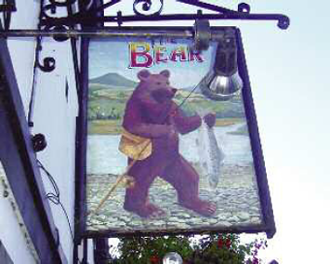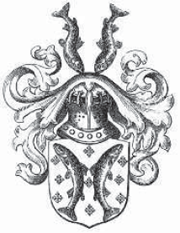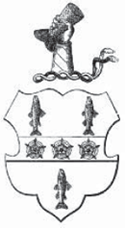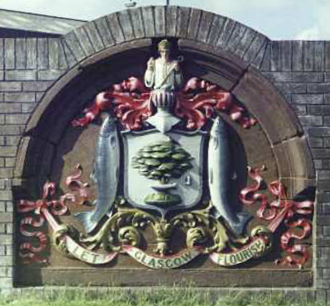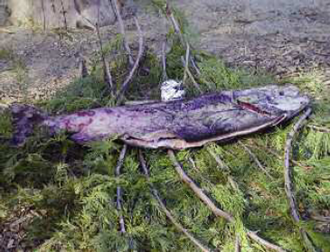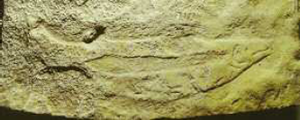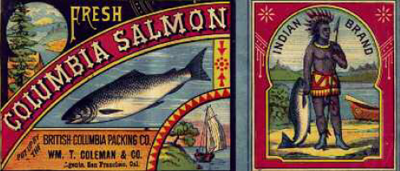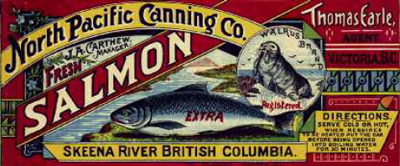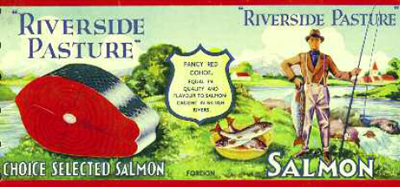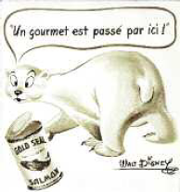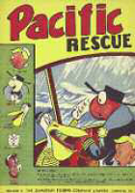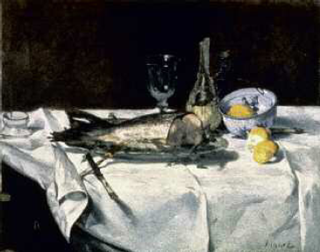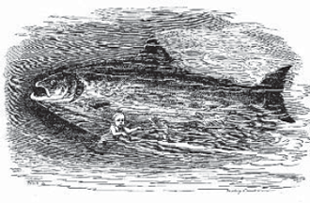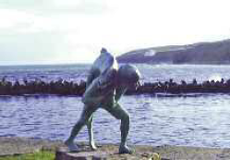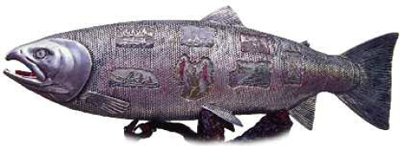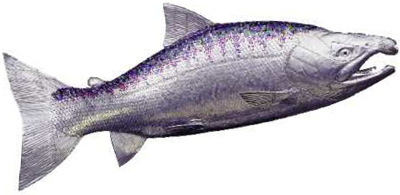6 Cultural Salmon
Let others praise the herring, the tunny, trout or whale, Give me the noble salmon with lightning in his tail (Donagh MacDonagh)1
For all the fulsomeness of Irish poet Donagh MacDonagh’s eulogy, Thomas Tod Stoddart’s paean to the salmon is hard to beat. ‘Among objects closely associated with the sublime and beautiful’, he raved, ‘I cannot help classing the noble fish.’ ‘The elegance of its form, the justness of its proportions, its glittering and gorgeous apparel’, he continued, ‘all entitle it to rank loftily in the scale of beauty, while its size and noble bearing, its strength and velocity, the rocks, torrents, and whirlpools among which it glides familiar, unite, in some degree, to elevate its pretentions and give it place withal amid creations of sublimity.’ Among members of the ‘finny tribe’, the salmon was peerless: ‘The dolphin, famed in poetry . . . the amulet, carp . . . sturgeon . . . all yield before it the submissive palm.’2
Salmon have thoroughly permeated the cultures of north Atlantic and north Pacific. Just as they are critical to the ecological making of place in their role as a keystone species that provides the nutrient base for fellow creatures and forest, they are also central to the cultural making of place. Reflecting the fish’s deep, centuries-old local meaning, public houses along Britain’s salmon rivers bear names like ‘The Leaping Salmon’ or depict the fish on their signs. They also appear on postage stamps. Salmon motifs also adorn the coats of arms of many British families and towns. Three salmon pointing upwards are the ensign of the Gloucester and Ord families on the Severn and Tweed respectively. The civic crest of Glasgow (which features a salmon with a gold ring in its mouth) indicates that the Clyde was once a bountiful salmon river.3 And the motto of the royal burgh of Peebles, at the confluence of the Tweed and the Eddlestone, acknowledges the largesse derived from the fish that swim past toward their redds: ‘Increase by Swimming against the Flood’ (Contra nando incrementum).4 Meanwhile, the town’s arms depict two salmon: one swimming upstream and two heading downriver. Comparable cultural reference points dot northern Europe too. In Germany, elaborate salmon insignia feature on the crests of the Princes of Upper and Lower Salm in the vicinity of the river that gave the fish its name.
The sign of the Bear Hotel in Crickhowell, Mid Wales, shows a bear holding a salmon he has presumably caught in the nearby River Usk. |
A 1959 postage stamp from the Soviet Union shows a chum salmon diving downwards.
A 1956 us postage stamp promoting wildlife conservation depicts a leaping king salmon.
The Heraldic Salmon 2: The crest of the Knight family of the city of Gloucester is unusual in showing a cross-section of a salmon, held aloft in complementary fashion by a section of an arm.
|
CEREMONIAL SALMON
Over in North America, the fish’s lofty cultural profile is initially visible in Newfoundland. Where Salmon Cove Brook empties into the sea near Champney’s East, a large island resembles the head of a man lying face up in the water. According to a legend of the Beothucks, the region’s indigenous peoples, this is the warrior spirit of Ougen Pushaman (‘stone man’). Each year, salmon (wasemook) returned to the creek to spawn, ensuring a generous food supply until European settlers snared the fish with massive nets at the river’s mouth. Facing imminent starvation, the Beothucks called on the Good Spirit, who despatched a huge warrior. Emerging from the sea, the giant crushed the offending nets and frightened off the intrusive fishermen. Mission accomplished, he lay down and turned to stone.5
On the west coast, salmon often enjoy a folkloric association with Coyote, an animal with peerless magical powers. Northwest coastal tribes believed that ‘the trickster’ taught them how to make traps and spears to catch the salmon he put in their rivers. An Okanagon tribal tale relates how Coyote elevated the salmon to the chief of the fishes (just as he made the grizzly the ruler of the four-footed animals and the eagle the lord of the birds).6 Coyote was even responsible for making it swim upstream to spawn. Striking a deal with the bears that had difficulty catching the slippery fish as they returned to the sea after spawning, the hungry Coyote persuaded the salmon that they would find a far safer place with soft golden sands to lay their eggs if they swam further up beyond a high falls. At the falls, the bears found it much easier to snatch them and paid a tithe in salmon to Coyote.
The eruption of Mount Shasta, a volcano in northern California, was also attributed to Coyote’s taste for salmon. His village had no access to salmon but the nearby Shasta Indians trapped plenty at their weir. These selfless neighbours told the lazy Coyote he could have as many fish as he could carry. While taking a nap on the way home, Coyote’s salmon were devoured by a swarm of wasps (yellow jackets), which left nothing but a pile of bones. Coyote returned to the dam and the fearful villagers reluctantly allowed him to take a second load. But the same thing happened. Once again, the Indians took pity on him and also agreed to help protect his third load. They too were powerless to prevent the wasps’ raid. All they could do was pursue the insects, which made a bee-line for Mount Shasta’s summit, where they disappeared into the top with the stolen salmon. Coyote and the Indians tried to smoke them out with a huge fire that culminated in a massive explosion which spewed the salmon – ready smoked – out of the mountain top (another ending gives the wasps the last laugh: they keep their salmon, pronouncing smoked salmon far superior to dried).7
In a Chinook tale from the mouth of the Columbia that the ethnologist Franz Boas recorded in the 1920s, Coyote eventually learns to pay due respect to salmon and instructs humans to follow suit. One day, he spears a salmon, which he cuts up, steams and eats. He goes fishing again next day but without luck. Coyote defecates and asks his excrement why the salmon have gone. Amazed at Coyote’s stupidity, his faeces reminds him that the first salmon must be split and roasted. Determined to make amends, Coyote goes fishing again and spears three salmon, which he roasts on spits. The following day, though, the fish have once more disappeared. Again, he relieves his bowels and seeks an explanation from his bodily waste, which explains that he must use separate spits for roasting the head, the back, the roe and the body. Next morning, the fishing is good again, but Coyote commits an almost endless series of further transgressions, among them: failure to roast all his catch before retiring for the night; failure to observe different methods of roasting different species; failure to roast and eat salmon at the same place; failure to throw a salmon from a net to the beach with its head facing upwards; and failure to realize that taboos on opposite banks of a river may be very different. Having finally learnt how to treat salmon correctly, he commands the local people of Clatsop to honour these taboos. He also instructs them that murderers, undertakers, girls entering puberty, menstruating women, widows and widowers must not eat salmon.8
Pacific tribes thus observed rituals to ensure the salmon’s perennial return. Within the parallel but joined worlds in which people and animals lived, the salmon held the status of ‘swimming person’, and, like other non-human persons, entered into contractual agreements with its human partners. An animal gave itself as a gift but expected to be treated with respect. If people did not fulfil their obligations, consequences would be dire.
Salmon were supernatural beings living in five big houses under the sea that corresponded to the five Pacific species. Here they assumed human form. Each year, though, at the salmon king’s behest, they donned silver skins and went to the human world. Coastal tribes ate their salmon plain but often garnished it with ritual in gratitude. In the 1920s, anthropologist Erna Gunther described various manifestations. The Tsimshian people summoned four ancient shamans to the fisherman’s platform when the first salmon was caught. One shaman dressed up in fisherman’s clothing and took a rattle in his right hand and an eagle’s tail feathers in his left. The shamans then placed the salmon on a mat of fresh cedar bark and, each carrying a corner, transported it to the chief’s house led by the one dressed as a fisherman. The rest of the village’s shamans, in full regalia, followed them into the house. After depositing the fish on a cedar board, they marched around it four times. Then the fisherman shaman invited two of the oldest shamans to slice up the fish. First, they severed the head. Then they cut off the tail with a knife made from mussel shell.9 (If a knife of stone or metal were used, it would provoke a thunderstorm or other calamity.) Next, they removed the stomach.
Variations on the basic format of this first salmon ceremony appeared up and down the coast. The Kwakiutl of Vancouver Island’s east coast operated at least three. Individual fishermen performed one type when they caught their first (sockeye) salmon. Having landed the fish in his canoe, Boas explained, he pulls out the spear and prays to it.
We have come to meet alive, Swimmer. Do not feel wrong about what I have done to you, friend Swimmer, for that is the reason why you come that I may spear you, that I may eat you, Supernatural One, you, Long-Life-Giver, you, Swimmer. Now protect us, (me) and my wife, that we may keep well, that nothing may be difficult for us, that we wish to get from you, Rich-Maker-Woman. Now call after you your father and your mother and uncles and aunts and elder brothers and sisters to come to me also, you, Swimmers.10
In one of the Kwakiutl collective ceremonies, the wife of the fisherman who catches the first salmon goes to the beach where she prays to it and cuts up the fish so that only the head and tail remain on the backbone. Then she roasts the carcass and carries it into the house for the guest of honour, who eats the eyes. If the roasted eyes are not eaten, salmon will vanish from the ocean. Everything possible is done to curry favour. After the flesh has been eaten too, she gathers the bones and skin, wraps them up and tosses the bundle into the sea so that new life can be rekindled and the fish return to its underwater house for another year. The final first salmon ceremony at Celilo Village prior to the completion of the Dalles Dam (20 April 1956) was a poignant and tearful occasion, presided over by the Wyams tribal chief. The occasional ceremony was held at the relocated village, with fish caught elsewhere but, largely stripped of meaning, they soon fizzled out completely.11
Not every salmon-eating people performed a formal ceremony. Yet its absence does not preclude a reverential attitude or salmon ‘myth’ (Gunther’s term). One story tells of a boy who arrives in salmon territory and is instructed to slay some children for food but to toss the saved bones into the sea so the children will come back to life. He then goes home bearing plenty of fish. Various taboos governed tribal lives. The Kwakiutl maintained that twins of the same sex were previously salmon and that their fathers therefore had special duties of propitiation. Others regarded the birth of twins during salmon season as an ill omen and prevented the parents from fishing or eating salmon. When Euro-Americans moved into salmon country, native peoples blamed the disappearance of salmon from their rivers on non-compliance with their taboos regarding twins.12
Asian salmon peoples also held first fish ceremonies (asir chep nomi in the Ainu language). The Ainu’s various animal gods disguise themselves as humans and lead similar lives. They watch over people and, assuming animal form, travel to the human world to bring food. Ainu ceremonies expressing gratitude to their salmon god, kamuy-chep (which translates as ‘fish that goes to the place of the deities’),13 were even more complicated than their North American counterparts. The salmon spirits who came bearing salmon were divided into particular groups, each with its own leader (headman). Prayers and offerings of sacred shaved willow sticks (inaw) were given at the local headman’s house to the fire-spirit (apehuchi kamuy), who has special powers of vision, and the river-owning spirit (pettorun kamuy). Having been properly entertained, each salmon spirit re-assumes human form and returns to its watery home. The fire spirit reports back to the river spirit on how the Ainu treated the salmon spirits. The river spirit then files a final report with the grand kamuy, who decides whether to send the salmon back the following year.
For killing salmon, the Ainu used a ceremonial club of a white wood such as willow. The first salmon was passed into the first fisher’s house through a ‘god window’ reserved for this purpose. The rest of his settlement group were invited to partake of his first catch. Offerings of rice and malt (for brewing sake) were wrapped in bamboo leaf and placed next to the first fish’s head. This first salmon, offered to the resident fire spirit, had to be cut with the same knife used for carving inaw. Another ceremony marked the end of the fishing season.14 These rituals were observed well into the twentieth century as the Ainu fished in defiance of laws enacted in the 1880s to reserve salmon exclusively for commercial fisherman operating at sea.15
The Ulchi, the native peoples of the northern Amur River region in Siberia, and the Nyvkh (Gilyak) of the lower Amur River and Sakhalin Island, also held first salmon ceremonies. Twice a year, to greet the spring and autumn runs, the Ulchi stuck two sacred sticks carved from riverbank willow into the river bottom near the bank about a foot apart and launched, between them, a little birch bark boat filled with food offerings – including salmon. Meanwhile, they entreaty Temu, their god of rivers, oceans and lakes (an old man who lives underwater), to send salmon, though they are careful not to sound greedy, requesting only small fish.16 Georg Wilhelm Steller reported that observance of a first fish ceremony by the rejoicing Kamtschadales of Kamchatka greatly annoyed their Russian overlords for whom they fished, ‘for however impatient the master may be to taste the new fish, the fishermen will have the first, looking upon it as a great sin if they do not eat it themselves, and with all due ceremonies’.17
The pre-Christian world of nature in the British Isles was no less animated and enchanted than the aboriginal domains of the north Pacific. Animals were powerful spiritual beings that connected people to the Celtic other world by crossing blurred and porous boundaries. Those most adept at navigating between these two realms were the bards and seers who could inhabit the skins of other creatures. Taliesin, the revered sixth-century Welsh bard and seer, acquired the wisdom of the other-than-human life forms through a shape-shifting sequence that changed him into a hare, a salmon, a bird and, finally, a grain of wheat, each form representing one of the four elements: earth, water, air and fire. In a collection of tenth- and eleventh-century Welsh tales based on early mythology (first preserved in the Peniarth manuscripts, The Mabinogion, c. 1225), the Salmon of Llyn Llyw stars as the world’s oldest and wisest animal, which King Arthur must find to set free Mabon ap Modron, the Welsh god of music, love and fertility. For only the salmon knows where he is imprisoned. Mabon’s liberators ride the salmon into Gloucester prison and release him.
Celtic mythology associates salmon with knowledge, prophecy and inspiration because of the fish’s uncanny ability to return to its birthplace. The most famous role for the salmon of knowledge (Breadan Feasa) is in the legend of Finn MacCool, the most renowned of Ireland’s early semi-mythical heroes, a peerless warrior, poet and seer of the third century. Before his birth, Finn’s father, a Fianna chieftain, dies in battle with a rival clan leader (Goll Mac Morna). Fearing for his life, Finn’s mother entrusts her newborn son to the care of a druidess and a female warrior, who raise him in secret. Spurned by kings loath to enrage Goll, Finn roams Ireland, eventually settling down (under the name of Deimne) to study with an old Druid poet and seer, Finegas the Bard. Finegas lives near the Well of Nechtan, a sacred pool of wisdom at the source of the River Boyne, because, believing himself to be the chosen one, he wants to catch its resident Salmon of Knowledge. After Finn has studied under him for a number of years, Finegas finally catches the fish (which has gained its knowledge by eating the ‘nuts of wisdom’ that have fallen from the sacred hazel tree that overhangs the well; the number of spots on a salmon’s back were thought to indicate how many nuts it had consumed).
Finegas instructs his pupil to cook the salmon, warning Finn not to partake of it himself. While Finn is turning the roasting fish on a spit, he burns his thumb by bursting a blister that rises up on the salmon’s skin and puts it in his mouth (in other versions of the story, some grease splashes onto his thumb and he licks it). On being served the fish, Finegas asks ‘Did you eat of the flesh?’ When Finn tells his master that he sucked his thumb after inadvertently touching the fish, Finegas recognizes him as the truly chosen one (worthy of the name Finn MacCool) and offers him the whole fish, from which he gains the salmon’s knowledge.18 Henceforth, when Finn sucks his thumb, he can prophesy the future. He then avenges his father’s death and kills Goll.
Salmon taboos also governed the activities of early Britons. One particular custom from the Outer Hebridean island of Lewis was recounted in Boethius’ acclaimed History of Scotland (1527). Martin Martin, a Gaelic-speaking native of Skye who was a geographer and map maker, repeated this story (as prime evidence of the remnants of a backward and superstitious pagan culture that hung on where Protestantism had not yet shone its modernizing light), after a visit in the 1690s: ‘The natives in the village of Barvas retain an ancient custom of sending a man very early to cross Barvas River, every first day of May, to prevent any female crossing it first; for that would hinder the salmon from coming into the river all the year round.’19
PICTURING SALMON
Pictorial representations complement these performative expressions of salmon significance. The first European salmon art, from 16,000–9,000 BC, was found in the caves of Altamira in northern Spain. First explored in the 1870s, Altamira is best known for its ceiling painting of 15 large bison. The pre-literate Magdalenians also depicted wild boar, horses and deer. But various artefacts have also been located here. Among the axes and arrow heads perfectly protected from the erosive forces of wind and water in Atlamira’s deepest recesses was a piece of reindeer antler etched with a salmon motif, evidently part of a harpoon for spearing salmon running up the river Pas that flows below the cave.
If, though, as seems likely, the main quarry of these late Palaeolithic Pyreneans became salmon once they had hunted out large mammals, why have so few sculpted representations been located? (The best known is the metre-long – probably life-size – image of the fish on the overhang of Abri du Poisson cave in southwest France’s Gorge d’Enfer). Salmon probably feature infrequently because they were so common. Cave art usually depicted the most feared and highly prized of animals; just because the Magdalenians covered their cave ceilings with bison does not mean they actually killed a lot. This also holds for the pre-written cultures of North American tribes. Comparatively few salmon feature on the northwest coast’s totem poles (orca, raven, eagle and bear abound on these carved and painted assemblages of symbols and images that were arranged to tell a story by being ‘read’ from bottom to top). Salmon appear more frequently in recent and contemporary designs but this is more a reflection of the perceptions and expectations of non-Native patrons. As in prehistoric Europe, salmon were probably too everyday to be routinely elevated to art form.
A Pictish symbol stone of ad 500–700, which bears a fish (most likely a salmon) on both sides, unearthed during the ploughing of parkland near Perth in 1945.
Over in Scotland, one of the most striking Pictish symbol stones from the early medieval era (c. AD 750–900) depicts fish that are almost certainly salmon. The 1.6-metre-long block of sandstone was struck by a plough just a foot below the surface of a field at Inchyra House, near Perth, in 1945. The Inchyra slab’s most recent use had been as the cover-stone of a grave, but judging from its shape and the orientation of the fish, its original purpose had obviously been to stand upright.20
A more obvious and recent, if easily overlooked, source of visual information about salmon is the imagery stuck to salmon tins. Early twentieth-century British Columbian brand names (‘Reigning’, ‘Royal Line’, ‘Coronet’, ‘Duke’ and ‘Empress’) underscored the prestigious reputation of the king of fish through association with royalty, particularly in view of the primacy of both British and overseas imperial markets. Archtypical Canadian motifs such as beaver, maple leaf and Mountie were another potent marketing strategy.21 Other labels simply carried pictures of creatures associated with far northern regions. Native peoples, when they featured, were caricatures of the Plains Indian ‘brave’ with his generic moccasins and feathered war bonnet. Popular Euro-American stereotypes cropped up again in a far-fetched colour advertisement for John West salmon that appeared in a British magazine in 1929: a cowboy and a (Plains) Indian – both of them a long way from cattle country – canoe together down a river fringed by thick, towering trees. The west coast peoples whose lives the fish defined rarely featured.
Tinned salmon label: ‘Indian Brand’, Victoria, BC.
Tinned salmon label: ‘Walrus Brand’.
John West tinned salmon label: ‘Riverside Pasture’ brand.
Tinned salmon label: John West, ‘Crystal Spring’ brand.
The labels of the premier British brand, John West, originally concentrated on John West himself or fishermen. 1930s advertisements featured men whose jobs were physically demanding and, presumably, were in particular need of salmon’s unrivalled sustenance: scaffolders, firemen and coal miners. John West adopted its famous slogan, ‘Insist on the Best’, during this decade, and ‘the best’ Pacific coho, the firm insisted, was equal in quality, flavour and colour to the finest ‘British river caught salmon’ (labels showed aristocratic-looking anglers clad in tweeds and waders, holding their rods and displaying their catch in a bucolic riverbank setting). During World War II, British troops marched and fought with Pacific salmon in their stomachs. Between 1942 and 1946, 80 per cent of British Columbia’s canned salmon pack was destined for British troops and Britain’s civilian front. Though little salmon was available for domestic sale, holding the attention of Canadian consumers was considered a good investment for peacetime.22 So the Disney Corporation created a group of cartoon characters, notably Wally the Walrus, Sylvester the Bear, Sammy the Salmon and an unnamed polar bear to advertise the Canadian Fishing Company’s (Canfisco) new top brand of ‘fancy’ sockeye, ‘Gold Seal’.
The Disney polar bear advertising ‘Gold Seal’ canned salmon.
Cover of an issue of the Pacific Rescue cartoon strip, c. 1950, a story based on a Canfisco fishing boat’s rescue of crewmen of a US bomber that crashed off the coast of British Columbia in February 1950.
Edouard Manet, Still-life with Salmon, 1864–5, oil on canvas. |
The look of the fish itself has shifted as well as the associated imagery. Whole salmon sometimes appeared in the early days, if rarely in their natural context – an exceptional label (‘Crystal Spring’, see page 159) shows the salmon engaged in its quintessential activity of leaping up falls. Between the 1930s and 1950s, labels were particularly graphic; hunks of raw fish – sometimes including the tail – sat in pools of what looks like blood but which was identified as ‘rich red oil’. Some labels (recalling Manet’s Still-life with Salmon) specified ‘Middle Cut’, depicting a fish halved to display the succulent centre. Some sections of fish had their skin partly peeled back, their flesh almost impossibly red. In the 1970s, photographs replaced artwork and labels became increasingly minimalist to focus attention on the product itself. They show a sanitized chunk of rosy fish garnished with a sprig of parsley and some sliced lemon or cucumber.
LITERARY SALMON
‘Rosy red’ flesh was a quality also celebrated in the fourth-century poem in which the fish makes its literary debut: Decimus Magnus Ausonius’s paean to the River Moselle:
Nor would I leave thee unsung, thou rosy red
Salmon, whose broad tail from the middle depth
Ripples the surface, when thy hidden course
Betrays its motion. Though, with scaly coat
Of mail, tho’ smooth in front, art doomed to grace
Some noble banquet . . . Upon thy head
How notable the markings, while to the stream
Thy belly swings, swollen with coils of fat!23
Leaping forward – and northwestward – to early twentieth-century Ireland, salmon sport in various poems of W. B. Yeats, an avid fisherman whose family owned a flour mill next to the salmon-weir at the falls on the Ballisodare River, County Mayo. In ‘Sailing to Byzantium’ (1926), salmon stand for irrepressible fecundity and the sheer exuberance of physical existence.
That is no country for old men. The young
In one another’s arms, birds in the trees
– Those dying generations – at their song,
The salmon-falls, the mackerel-crowded seas,
Fish, flesh, or fowl, commend all summer long
Whatever is begotten, born, and dies.
Caught in that sensual music all neglect
Monuments of unaging intellect.
Fellow Irish poet Seamus Heaney is just as keen to relate a fundamental salmon characteristic to the human condition. A short early poem, ‘The Salmon Fisher to the Salmon’ (1969), dwells on the primordial urge to return:
your exile in the sea
Unconditionally cancelled by the pull
Of your home water’s gravity
Heaney evokes a fleeting but deep relationship between the angler and his quarry. Standing in mid-river and casting his fly, currents eddying around him, the fisherman feels at one with the object of his desire in a shared watery medium (‘I go, like you, by gleam and drag’). Then he catches the fish and shatters the illusion of kinship. He recognizes his responsibility for the salmon’s homecoming ‘grief’ and makes his own journey home, bearing the marks of his culpability (which are also the vestiges of his former salmon self).
We’re both annihilated on the fly.
You can’t resist a gullet full of steel.
I will turn home fish-smelling, scaly.24
A salmon-inspired poet in North America is Tim Bowling, who has worked as a deckhand on a Fraser River gill-netter. Many poems in his first collection, Low Water Slack, pivot on the fish he sees as regal, heraldic and holy, dignified until the bittersweet end. In ‘Sockeye Salmon’, Bowling compares its silver scales to the ‘breastplate of Kings’ and describes eyes that ‘never stop believing in the holy purpose of the flesh: they know their dying is divine’. The bodily conversion prior to spawning reminds him of the vivid colours of a court jester as they ‘make the abdicating leap . . . frominstruments of god to capering fools’.25
Bowling’s salmon poems are deeply empathetic and visceral. But Sherman Alexie, a Coeur d’Alene/Spokane Indian from eastern Washington, demonstrates a more atavistic and intimate, if less overtly emotional link with the fish. In the title poem, ‘The Man Who Loves Salmon’, of a recent collection of salmon poetry, the hen salmon is the man’s lover and her off spring are his ‘finned children’. ‘Creation Story’ evokes the profound dependency of Alexie’s tribe:
I catch the salmon
with my bare hands
and offer it
to my mother
she opens the fish
and finds
a city of Indians
living among the thin bones26
Europe’s salmon poet par excellence is Ted Hughes. In 1961, Hughes moved to North Tawton in north Devon, a small town near the Taw, a salmon stream that rises on Dartmoor and empties into the Bristol Channel. River, a collection published in 1983, the year before he became poet laureate, contains his greatest clutch of salmon poems. ‘The Morning Before Christmas’ features dead males in their ‘wedding finery’ trapped in a sluice at a weir. In ‘New Year’, Hughes captures the perfect balance between life and death, the symbiosis between ‘the lank, dying fish’ and ‘the ticking egg’ at the redds that are both marriage bed and graveyard (and characterized in ‘October Salmon’ as the ‘only mother he ever had’). ‘An August Salmon’ mulls over the unflinching demise of a fish ‘mortally wounded by love and destiny’.
His beauty bleeding invisibly
From every lift of his gills
Ever since Aesop’s Fables, animals have been infused with symbolic value and associated with human qualities within the exemplary ‘book of nature’. The crab, for instance, because of its sideways mode of locomotion, has been a by-word for inconstancy. But the salmon has traditionally been seen as an unambiguous creature, representing only nobility. In ‘September Salmon’, the selflessness that serves the next generation captivates Hughes, and ‘October Salmon’ demonstrates just how easily salmon are personified.
Death has already dressed him
In her clownish regimentals, her badges and decorations,
Mapping the completion of his service,
His face a ghoul-mask, a dinosaur of senility, and his
whole body
A fungoid anemone of canker –
What a change! From that covenant of Polar Light
To this shroud in the gutter!
What a death-in-life – to be his own spectre!
His living body become death’s puppet,
Dolled by death in her cruel paints and drapes
At the final reckoning, the salmon’s emblematic quality is grace under pressure:
The epic poise
That holds him so steady in his wounds, so loyal to his
doom, so patient
In the machinery of heaven27
Hughes was another ardent angler among authors. His last interview, appropriately, appeared in an American fishing magazine.28 He was active in the Westcountry Rivers Trust and supported the work of the Atlantic Salmon Trust, which published (1985) a limited edition of 156 hand-set, numbered and signed copies of his most acclaimed salmon poem, ‘October Salmon’.
An earlier, more gung-ho salmon fisherman among British writers was Charles Kingsley. Having recently finished his classic children’s fantasy tale, The Water-Babies, he spent his 1862 summer vacation salmon fishing in Scotland. After fishing the Tay, he travelled west to the Duke of Argyll’s castle at Inveraray, where the River Aray, he told his mother, held more salmon than water.29 As well as dramatizing the plight of the notorious ‘climbing boys’, Water-Babies reflects on the salmon’s wretched condition (though it was much more successful in exposing the young sweep’s predicament and galvanizing action to improve his lot). Water-Babies also yields insights into the Victorian salmon’s social status. Tom, the hapless and grimy apprentice sweep on the run, leaps into a stream’s crystal waters to cleanse himself and floats downstream. On reaching the estuary (having drowned and changed into a tiny elf-like creature), he encounters an impressive fish heading upriver, ten times bigger than a large trout and a hundred times his own size: ‘Such a fish!’, marvels the over-awed water-baby, shining silver from head to tail, and here and there a crimson dot; with a grand hooked nose and grand curling lip, and a grand bright eye, looking round him as proudly as a king, and surveying the water right and left as if all belonged to him. Surely he must be the salmon, the king of all the fish.’ The fierce otter that Tom had previously encountered reinforces this persona, portraying the salmon as a haughty fellow with a low opinion of other fish (‘they are so proud and bully the little trout, and the minnows’).
The salmon, however, assures Tom that he has nothing to fear because salmon are all true gentlemen’. The biggest salmon is also the model Victorian husband, escorting his mate, fussing over her and urging her to rest, unlike the ‘vulgar’ chub, roach and pike that ‘have no high feelings, and take no care of their wives’. Trout, the salmon pair explain, are ‘relations of ours who do us no credit’. Instead of doing the manly thing and heading off to sea, they hang around, eating anything they can grab, so impudent and depraved they even eat young salmon and force themselves on lady salmon. If a trout were to commit the ultimate act of transgression and try to mate with a female salmon, the male salmon warns, he would have to kill them both.30
Paddling down to the ocean, the former chimneysweep’s apprentice in Charles Kingsley’s Water- Babies (1863) is dwarfed alongside a magnificent salmon steaming in the opposite direction. |
|
Henry Williamson poses with his 9-pound salmon caught in the River Bray at Shallowford, Devon, April 1935.
A more accurate account of salmon behaviour was communicated by Henry Williamson. Ironically, the finest salmon novel in English was the work of an author best known for dramatizing the life of an animal that introduces itself to Tom in Water-Babies as the lord of the salmon: the otter. Henry Williamson’s Salar the Salmon (1935) was set in the same territory as Tarka the Otter (1927) – north Devon. Williamson wrote Salar in his late thirties while residing at Shallowford House, Filleigh. He enjoyed fishing rights on the River Bray, which ran through the deer park. Just a stone’s throw from his house was ‘Humpy Bridge’, where he fished for trout and salmon in Bridge Pool.
Though it failed to match the success of Tarka, Salar again demonstrated Williamson’s talent for crawling inside another creature’s skin to craft an endearing animal personality. Salar is a five-year-old, 9-kilogram cock salmon on his spring run, an immensely powerful fish, his shoulders ‘hog-curved with stored power’ for the spawning run that drives the narrative forward. Quitting the Atlantic, Salar enters the ‘Severn Sea’ (Bristol Channel) and swims into the estuary of the ‘Two Rivers’ (Taw and Torridge). Next, he heads up the Taw, turning north again where the Mole joins, and northwest at the Mole’s junction with the Bray. En route to his spawning grounds on Exmoor’s southern slopes, Salar passes right under Williamson’s nose at Humpy Bridge.
This monogram by the renowned animal artist Charles F. Tunnicliffe features on the final page of the first edition of Henry Williamson’s Salar the Salmon (1935).
Williamson was well versed in Salar’s natural history by reading back issues of Salmon and Trout magazine. He knew that scale rings revealed Salar’s story and noted his outward changes in colour prior to spawning. Grotesque fungus spreads across his head and with his hooked jaws he can no longer close his mouth properly.31 ‘In slow pulse after slow pulse’, Williamson reflects on Salar’s post-spawning condition, ‘his life’s sweetness had been drawn from him, leaving with each emptiness a greater inflaming desire, which during the day lapped about the wasted body with dreams of an everlasting sea of rest.’32 Salar pulsates with blood, emotion, instinct, sensuality and wildness, his return journey exhibiting the ‘everlasting action’ of ‘racial immortality’. Williamson’s reputation has been tarnished in the public mind by his sympathy for fascist ideals and admiration for Hitler’s pre-war Germany (he joined Sir Oswald Mosley’s British Union of Fascists in 1937 and was briefly imprisoned under the Defence of the Realm Act when war broke out). Given that Williamson found the aesthetic dimensions of the fascist worldview enormously appealing, is Salar a Nietzschean super-fish, the embodiment of primordial heroism and every other romantic quality of intellectual fascism?
Tunnicliffe’s picture of a spawning at the redds on Exmoor appeared in the first illustrated edition (1936) of Salar the Salmon.
The salmon as human allegory also suffuses Scottish author Neil Gunn’s stream-of-consciousness story about going home, Highland River (1937). After the traumatic experience of youthful service in World War I, the novel’s main protagonist, Kenn, eventually returns to his childhood village. His parents and brother are now dead and ‘strangers’ occupy his old home. His struggle as a nine-year-old against a huge salmon trapped in a pool supplies the novel’s frenzied opening scene. The 14-kilogram fish – as long as Kenn is tall – is more or less a match in physical strength. But he kills it with stones and his bare hands.
Kenn’s Highland river represents sanity and purity in a crazy, contaminated world. ‘Our river took a wrong turning somewhere!’ he laments, but adds that ‘we haven’t forgotten the source’. Impelled by an ‘impulsive need’ to get back to the source of life and of himself, he makes for the headwaters of his childhood river (a place he has never been before). Moving up beyond familiar territory, he passes tiny spawning pools, feeling sympathy for the salmon as their ‘strength was spent magnificently, utterly, almost to the point of death’ and, for the first time, feels somewhat ashamed of his primordial urge to kill them. He, too, feels at home here, because he, too, has almost consummated his journey: ‘He was drawing back into his own. He could feel the pull – as the salmon felt it.’33
The ideas of the Swiss psychiatrist Carl Gustav Jung also shaped a highly influential non-fiction work – Joseph Campbell’s The Hero with a Thousand Faces (1949). Campbell identifies a monomyth’ that conforms to an ageless format regardless of time and place: the hero leaves his familiar world to embark on a quest and, after a long journey beset by trials and tribulations that involves the irrevocable crossing of watersheds, he finally returns home. Regardless of how effectively this formula encapsulates the essence of mythology, Boria Sax reflects, it clearly describes the lives of salmon’.
They leave their homes to travel downstream . . . to the sea . . . Near the conclusion of their lives, they return upstream to their place of their birth to spawn. If the theory of Campbell is even partially correct . . . it helps explain the fascination of salmon. The life cycle of the salmon presents an archetypal image of the heroic quest. Certainly, the accomplishment of the salmon in swimming upstream is a feat of heroic proportions. Their magnificent leaps also suggest transcendence.34
Perhaps the salmon is the most ancient of all western heroes and maybe its incredible journey across the thresholds of salt and freshwater is the original quest that inspired the first human stories of heroes and their odysseys.
SCULPTED SALMON
For all their epic attributes, wild salmon would require supernatural powers to transcend all the obstacles that we have tossed across their path. Contemporary sculptures of salmon in public spaces in Oregon and Washington represent an effort to raise public consciousness of native salmon, and money for their conservation. Tom Jay and Sara Mall Johani, who live on Washington’s northern Olympic Peninsula, spearhead this crusade. A former salmon fisherman and bronze foundry operator turned sculptor, Jay is helping to restore the summer run of chum to his local river, Chimacum Creek. ‘Heroic Chum’, a two-metre bronze head thrusting out of the tarmac in a strip mall parking lot on the fringes of Port Townsend, conveys the hope that the beleaguered fish will return. His most renowned sculpture, though, is ‘Fin’, a fibreglass 7.5-metre, 580-kilogram female chum that travels to schools and fairs to promote the conservation work of Wild Olympic Salmon (founded in 1987). Fin’s inside walls depict stream bank life and a stream flows through her from tail to mouth. Johani’s creations include orange glass beads in the form of salmon eggs, each with a tiny black dot in the middle to represent the developing eye in a month-old egg sac, and a ‘salmorang’ inscribed with the slogan ‘Salmon Come Back.’35
Cast by Pete Langley, owner of the Port Townsend Foundry in Washington state, ‘Ali the Aluminum Salmon’ weighs 400 pounds. Most of the other fish in the ‘Soul Salmon’ project are fibreglass.
Canned Salmon created by Vladimir Shakov and Chris Wooten as part of the ‘Soul Salmon’ project (2001) is made from recycled cans.
Johani is president of Soul Salmon 2001, a public art project that installs ‘artful’ salmon around Puget Sound. ‘Imagine coming to work one day and being startled by an eight foot salmon you would meet only in a dream’, explains the project’s website. ‘It might be wearing a hat, sporting flames or sprouting trees or cloaked in poems praising rivers. Imagine the effects of hundreds of such salmon throughout the state!’ Sponsored by businesses, charities and civic bodies, local artists are decorating hundreds of 2.4-metre fibreglass salmon. Soul Salmon’s initial venture, ‘Soul Salmon, The First Splash’, displayed 35 sculptures between November 2001 and April 2002 (displays of salmon sculpture have since spread to other parts of the west coast). One of them, Ela Brickson’s ‘Save the Last Dance for Me’, gave irrevocable fate a humorous slant. ‘Esmeralda’, dressed to kill for her last fling, sports a party frock and her tail splays into legs clad in striped knee socks. In her pink high heels, she cavorts on a plinth of gravel. ‘If it was me going to my last resting place’, Brickson explains, ‘I would dress up, put on my high heels and have a great time.’36 The purpose of Esmeralda and her kin is to ‘reintroduce and revitalize wild salmon in our imagination and experience as a totem of local culture and keystone of northwest ecosystems . . . reaffirming the old notion that community is grounded in the commons that salmon embody’.37
SALMON ARE US
Soul Salmon’s ‘salmon commons’ is an arresting metaphor for a physical space that people and other creatures occupy communally, a shared home where land, waters and natural resources are used for common good. This salmon commons has even been elevated to nation status. You will search conventional maps of North America in vain for Salmon Nation. For some though, it is very real. Inspired by the title of a book by Jim Lichatowich and Seth Zuckerman (Salmon Nation: People, Fish, and our Common Home, 1999), this new country is a transnational entity whose terrestrial domain is defined by the realm of its iconic animal, stretching down the Pacific Coast from Alaska to northern California. The brainchild of Ecotrust (Portland, Oregon), which published the aforementioned book, Salmon Nation was born in 2003. Landward boundaries are defined by the outer edges of the watersheds within which Pacific species have spawned historically. Salmon Nation’s underlying objective (a tall order) is to promote a sense of place among all its human residents through a bioregional notion of belonging that transcends the usual divisions of race, ethnicity, class, gender and religion. An emerging Declaration of Salmon Nation based on citizen input currently includes the following uplifting clauses:
Whereas: the rains fall in Salmon Nation, the forests grow in Salmon Nation, the hills and mountains of Salmon Nation constrict flowing rivers into cascading streams, and the Salmon return throughout Salmon Nation, notwithstanding the efforts of the human citizens of Salmon Nation. Therefore: let the rains fall, let the forests grow, let the streams flow, let the salmon swim, so that all the citizens of Salmon Nation may be fed. Whereas: The spirit and blood of First Nation Peoples and Salmon have fertilized the rainforests of home and spawned the Salmon Nation and whereas First Nations have been joined recently in this eternal responsibility by non-first nations citizens. Therefore: all who now call these Rainforests of Salmon Nation home, share in the responsibility for its protection given to us by the creator. Whereas: the sight of salmon leaping elevates the spirit. Therefore: we love them.38
Festivals that revolve around the fish’s annual return express that love. Tokens of profound affection and esteem are evident in East Asia too. The first accomplishment of the Come Back Salmon Society (founded in 1979) was to establish a Living Museum of Toyohira Salmon in Sapporo (Hokkaido’s capital).39 A two-day Ainu first fish celebration was reinstated in Sapporo in the early 1990s.40 In September 2004, the second Sakhalin Salmon Festival on the Kamchatka Peninsula brought together those working to protect wild salmon around the Pacific. The ‘Declaration of Salmon Rights’, which all delegates signed, proclaimed that Salmon has the right to live. Salmon has the right to pure water. Salmon has the right to reproduce’.
In its effort to exercise that right to reproduce, the salmon struggles upstream. This contra flow, Sax believes, is what we find particularly captivating. ‘All of what we call “civilization”’, he speculates, ‘is perhaps, a sort of swimming “against the current” of the natural world. Perhaps the human identification with salmon may be . . . that both seem to contradict natural patterns.’41 So salmon are us. Yet this sense of kinship does not prevent us from eating salmon – as a close relationship with dogs, cats and horses prevents most North Americans and Europeans from eating these best friends. On the contrary, consuming salmon flesh is an act of communion and thanksgiving for those of us who dwell in salmon nations. Their flesh becomes our bodies. The next step is for us to become what Soul Salmon calls ‘salmon people’. Salmon are us and we are salmon.
